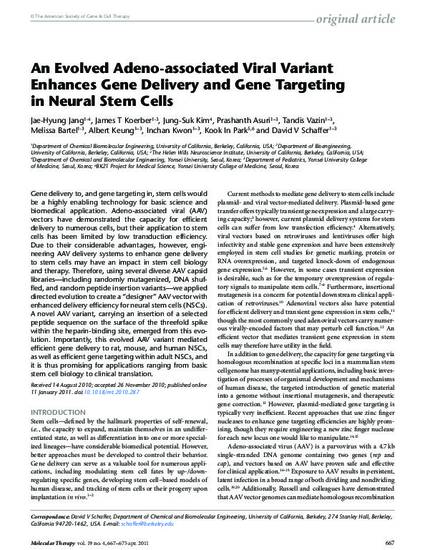
Gene delivery to, and gene targeting in, stem cells would be a highly enabling technology for basic science and biomedical application. Adeno-associated viral (AAV) vectors have demonstrated the capacity for efficient delivery to numerous cells, but their application to stem cells has been limited by low transduction efficiency. Due to their considerable advantages, however, engineering AAV delivery systems to enhance gene delivery to stem cells may have an impact in stem cell biology and therapy. Therefore, using several diverse AAV capsid libraries—including randomly mutagenized, DNA shuffled, and random peptide insertion variants—we applied directed evolution to create a “designer” AAV vector with enhanced delivery efficiency for neural stem cells (NSCs). A novel AAV variant, carrying an insertion of a selected peptide sequence on the surface of the threefold spike within the heparin-binding site, emerged from this evolution. Importantly, this evolved AAV variant mediated efficient gene delivery to rat, mouse, and human NSCs, as well as efficient gene targeting within adult NSCs, and it is thus promising for applications ranging from basic stem cell biology to clinical translation.

DOI:
doi/10.1038/mt.2010.287